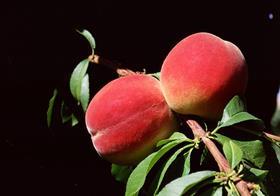
Stonefruit has kept up its enigmatic reputation this year after a continued fall in production hit sales in UK supermarkets. Notoriously sensitive to weather, the category has faced a series of setbacks due to a climate increasingly prone to extreme weather swings.
The past 12 months encompass last summer’s European season and the southern hemisphere’s winter exports to the UK. Both have seen better years.
Dan Masters, procurement manager at Norton Folgate, says: “In terms of volumes we’re coming out of a tricky northern hemisphere season last year, and in the southern hemisphere South Africa for the last couple of years has been tricky due to the drought they had. The trees are still under quite a lot of stress from the previous season.”
He adds: “The northern hemisphere had quite a lot of rain; cherries was one of the hardest seasons coming out of Spain, the quality of the UK crop was good however.”
This year is looking better already, despite some rain, according to Masters. “There’s a lot of early fruit around. Murcia had rain and hail two weeks ago, which has affected nectarines a bit.”
Indeed nectarines were one of the worst affected fruits, with data showing volumes plunged by 18 per cent in the past year. Cherries, long a standout performer in the stonefruit club, also saw volumes in retail fall by 5.9 per cent. Notably, it did not affect the value of their market, with prices making up for the dip in volumes.
This year, South Africa’s production has also been under-firing, with the drought still affecting the trees. As well as lower yields, the fruit came out smaller, again down to unfavourable conditions.
Dalene den Besten, commercial manager at In2Stone, says: “The poor cold units during winter also played a part. In addition to this, the heat and rain during the flowering period resulted in the trees aborting flowers.Only the late flowers set, which are smaller, resulting in smaller fruit.”
For den Besten, other European markets provided a happier hunting ground for the South African crop this year, with a key plum variety, Angeleno, seeing lower volumes than usual. “The market got tricky towards the end of the season on Angeleno. We usually see a lift in prices, but that did not happen this year. This resulted in less late-season volume being sent into the UK market as exporters opted to send the product elsewhere. The UK had Chile that could fulfil their requirements.”
Chile continues to be a core supplier for stonefruit, but they too suffered from some severe weather during the growing season. In November the country was hit by its worst hail storm in recent memory across major stonefruit growing regions south of Santiago, destroying vast swathes of the cherry crop, as well as wiping out a lot of kiwis. Peaches and nectarines were affected to a lesser extent.
Despite two years of sustained volume decrease, there is a philosophical outlook on a sector that recognises it is in transition, having to up its game against categories like berries, with a stronger year-round offering. Peaches are an example of a fruit that has not fared well recently, but Masters points to the work being done to improve its offering.
“There are some interesting late-season varieties coming out of South Africa,” he says “The Burchell Nursery breeding programme is also having some success with peaches harvesting early to mid-March fruit.”



